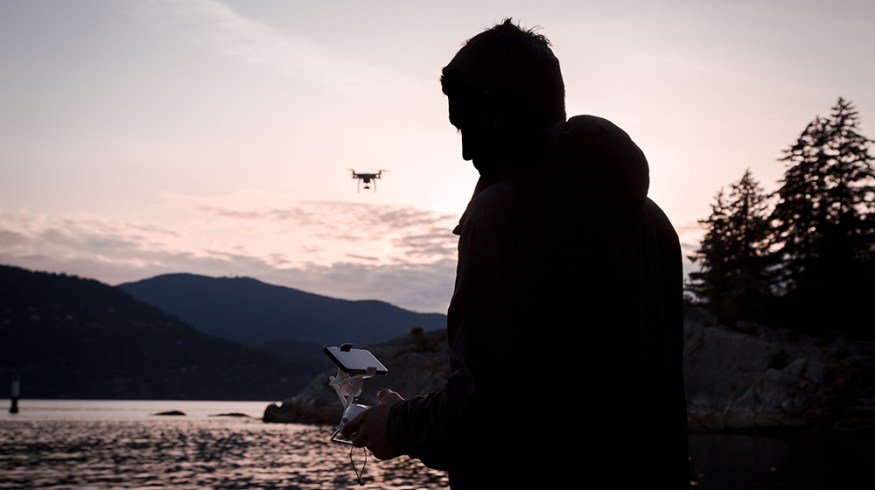
A Travel Guide to Taking a Drone on a Plane
Planning to take your drone on an airplane? Here is the travel guide you need to get you through security and on your way in no time.
Top image via Shutterstock
Traveling with a drone isn’t as hard as you might think — but you do need to be properly prepared. Here are a few tips that cover everything from case suggestions to flight restrictions. Use this advice and you’ll have no problem getting through security in an orderly fashion.
Carry-On Bags vs. Hard Shell Cases

Images via Shutterstock
Depending on the size and amount of gear you have for your drone, you’ll need to decide if you want to carry on the drone or check it in a hard shell case. Just like traveling with camera gear, it’s always best to keep things with you. A checked bag is always a risk. Even if it’s handled properly, there’s always a chance that the bag can get delayed or put on the wrong plane.
If you have a smaller drone like like a Phantom, there are bags designed for carry-on purposes. You just need to make sure that the bag fits in the overhead compartments or underneath your seat — this differs on every plane.
DJI actually has a hard shell backpack, but I’d actually advise against getting a bag with any type of branding. You want your bag to be as inconspicuous as possible. While airport security doesn’t care if your bag says DJI, thieves might. The hard shell backpacks are always uncomfortable and wear you down if you have to carry over long distances. I much prefer a soft bag for carrying long distance. Again, there is an official soft backpack for drones — but you can find all sorts of these bags online.
If you have a larger drone like a DJI Inspire 1, Yuneec Typhoon, or Freefly Alta, you’ll definitely want a rolling hard shell case to check the drone. The Inspire and Typhoon are borderline in size. They will fit in overhead compartments on larger planes, but they won’t come close in smaller planes. Rather than risk finding out at boarding time, just plan to check your drone. A hard shell case is your best form of protection when it comes to traveling with a drone. I once checked a semi-rugged case with padding, and still found that my baggage wasn’t handled properly.
The best way to travel is actually a combination of both. I always check the drone body, controller, and accessories. In my bag, I carry the drone batteries, as well as the camera gimbal and memory cards. Those are things I want to make sure don’t get tossed around below the plane.
Lithium-Ion Batteries

Rechargeable lithium ion batteries must always be carried in carry-on baggage. This includes your drone batteries. Do not check your batteries with the drone. It’s also recommended that you protect the battery terminals; you can simply cover them with tape.
You’ll need to verify with the airline, but the standard regulations limit passengers to only two lithium ion batteries over 100 watt hours (Wh). There is no limit for most batteries under 100 watt hours.

This is why you’ll see manufacturers like DJI producing two types of batteries. For the Inspire 1 series, DJI produces the TB-47 battery that has 99.90 Wh, and the TB-48 which has 129.96 Wh. The FAA restricts passengers to two TB-48 batteries, but they can carry several TB-47 batteries. You can also combine the type and carry two TB-48 batteries at four TB-47 batteries.
New batteries should have the watt hour marked on them. If for some reason they don’t, you can calculate the watt hours by multiplying the battery voltage by the Amp hours (Ah).
For a more detailed look, check out this video from Tom’s Tech Time.
Tips for the Security Line

When you’re going through security with your drone in tow, it will always benefit you to place batteries in their own bin, just like you do with your laptop. There is a very good chance that airport security will pull your batteries aside to do an inspection. The more open you are about putting them in their own bin, the faster you can get to your flight.
In my experience, the only question I am usually asked is, “What are these batteries for?” I’ve never had to defend the Watt hours or anything of that nature. That said, I still know everything in my bag.
Take a Repair Kit and Extra Propellors

Image via Shutterstock
There’s really nothing worse than traveling across the world only to realize you don’t have enough propellors. In case a prop is damaged during travel, or even worse, in a drone crash, you’ll want to make sure you have extra propellors to get you back in the air. For extra protection, keep the propellors in their original packaging if they’re new.
In addition to having extra propellors, if you do manage to crash your drone, you’ll want to have the repair tools handy. That way if you need to make any adjustments or open up the drone to remove some sand, dust, or debris — you’ll be good to go.
Have any additional tips for travelers? Let us know in the comments below.





